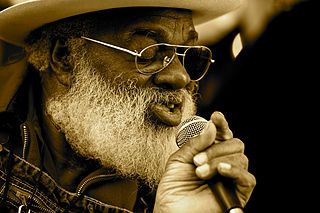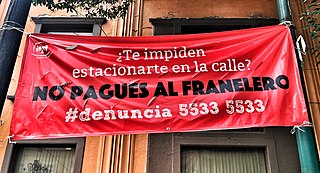 W
WStreet performance or busking is the act of performing in public places for gratuities. In many countries the rewards are generally in the form of money but other gratuities such as food, drink or gifts may be given. Street performance is practiced all over the world and dates back to antiquity. People engaging in this practice are called street performers or buskers in the United Kingdom. Buskers is not a term generally used in American English.
 W
WA barrel organ is a French mechanical musical instrument consisting of bellows and one or more ranks of pipes housed in a case, usually of wood, and often highly decorated. The basic principle is the same as a traditional pipe organ, but rather than being played by an organist, the barrel organ is activated either by a person turning a crank, or by clockwork driven by weights or springs. The pieces of music are encoded onto wooden barrels, which are analogous to the keyboard of the traditional pipe organ. A person which plays a barrel organ is known as an organ grinder.
 W
WBusker Alley is a musical with music and lyrics by the Sherman Brothers and a book by AJ Carothers, based on the 1938 British film St. Martin's Lane.
 W
WIn the United States there have been numerous legal cases about regulations and laws that have decided the rights of street performers to perform in public. Most of these laws and regulations have been found to be unconstitutional when challenged. In the US, free speech is considered a fundamental right of every individual, guaranteed by the First and Fourteenth constitutional amendments, and in the majority of legal cases it has been concluded that practicing artistic free speech is legal. Street performing is legally considered to be artistic free speech and is protected, just as is panhandling or begging.
 W
WA Chinchinero is an urban street performer in Chile, usually a man or young boy, who plays a bass drum-type percussion instrument with long drumsticks strapped to his back which also involves a rope with a noose tied around the performer's foot to play the cymbals which also form part of this improvised instrument. Said instrument has been invented and produced informally and can carry any rhythm or melody.
 W
WGrandpa Elliott Small, born Elliot Small in 1944, also known as Uncle Remus, is a veteran street-musician in New Orleans, Louisiana, United States. He plays the harmonica, sings, and is a street icon in New Orleans.
 W
WFraneleros are people who have as main activity guarding or keeping an eye on cars parked in several streets in certain places in large Mexican cities, getting a tip as a reward, which sometimes is established by them. The term comes from the Spanish word franela, meaning flannel, which is a small piece of soft light fabric which they use to wash the cars if they are asked to, or to simply wave it around to give parking indications. Franeleros are sometimes also known as cuida-coches or "viene vienes", which is the phrase they commonly say while giving the parking indications. In 2007, due to the criticisms around this controversial "occupation" this guarding activity became illegal in Mexico City, but it is still widely practiced. In areas where parking meters have been installed, franeleros no longer operate.
 W
WJuggling is a physical skill, performed by a juggler, involving the manipulation of objects for recreation, entertainment, art or sport. The most recognizable form of juggling is toss juggling. Juggling can be the manipulation of one object or many objects at the same time, most often using one or two hands but also possible with feet. Jugglers often refer to the objects they juggle as props. The most common props are balls, clubs, or rings. Some jugglers use more dramatic objects such as knives, fire torches or chainsaws. The term juggling can also commonly refer to other prop-based manipulation skills, such as diabolo, plate spinning, devil sticks, poi, cigar boxes, contact juggling, hooping, yo-yo, and hat manipulation.
 W
WKathputli Colony is a colony of street performers in Shadipur Depot area of Delhi. For the last 50 years, it is home to some 2,800 families of magicians, snake charmers, acrobats, singers, dancers, actors, traditional healers and musicians and especially puppeteers or kathputli-performers from Rajasthan. This makes it world’s largest community of street performers.
 W
WA living statue is a performer who poses as a statue or mannequin, usually with realistic statue-like makeup, Performances are commonly on the street busking but may also be at events where the artist is paid. A living statue attraction, as a performance, is the artist's ability to stand motionless and occasionally come to life to comic or startling effect.
 W
WA monkey stick is a traditional English percussion instrument, used in folk music. The origins of the name are not known but it is believed to stem from an association with Roma, Spanish and Italian buskers who were popular in London in the Victorian era. Alternatively, the name "Monkey Stick" could come from modern practice, in homage to the trained monkeys formerly used by buskers to solicit money from passersby. Some musicians have taken to fixing a small stuffed toy monkey to the tops of their instruments.
 W
WMusic for a Blue Train is a 48-minute 2003 documentary about busker musicians in the Montreal Metro subway train system. It was written and directed by Mila Aung-Thwin of EyeSteelFilm and produced by Germaine Ying Gee Wong for the National Film Board of Canada.
 W
WDuring the reign of Queen Elizabeth I (1558–1603), English art and high culture reached a pinnacle known as the height of the English Renaissance. Elizabethan music experienced a shift in popularity from sacred to secular music and the rise of instrumental music. Professional musicians were employed by the Church of England, the nobility, and the rising middle-class.
 W
W"O du lieber Augustin" is a popular Viennese song, first published about 1800. It is said to refer the balladeer Marx Augustin and his brush with death in 1679. Augustin himself is sometimes named as the author, but the origin is unclear.
 W
WA one-man band is a musician who plays a number of instruments simultaneously using their hands, feet, limbs, and various mechanical or electronic contraptions. One-man bands also often sing while they perform.
 W
WPlaying For Change is a multimedia music project, featuring musicians and singers from across the globe, co-founded in 2002 by American Grammy award-winning music producer/engineer and award-winning film director Mark Johnson and film producer/philanthropist Whitney Kroenke. Playing For Change also created in 2007 a separate non-profit organization called the Playing For Change Foundation, which builds music and art schools for children around the world.
 W
WProfessional regurgitation is the act of controlled regurgitation. The act consists of swallowing and regurgitating various unusual objects. The objects may consist of anything from live animals and, to light bulbs, billiard balls and kerosene. The act also includes water spouting in which a performer will drink a large amount of fluids and regurgitate them in a controlled manner.
 W
WShowtime is a type of performance Litefeet/pole dancing done as a busking routine using hand holds installed inside New York City Subway cars. Showtime includes acrobatic flips, hat and shoe tricks, and pole tricks. Estimates have placed the number of Showtime dancers in the low hundreds.
 W
WSnake charming is the practice of appearing to hypnotize a snake by playing and waving around an instrument called a pungi. A typical performance may also include handling the snakes or performing other seemingly dangerous acts, as well as other street performance staples, like juggling and sleight of hand. The practice was historically the profession of some tribesmen in India but this is no longer the case. Snake-charmer performances still happen in other Asian nations such as Pakistan. Bangladesh, Sri Lanka and south-east Asian nations like Thailand and Malaysia are also home to performers, as are the North African countries of Egypt, Morocco and Tunisia.
 W
WA street artist is a person who makes art in public places. Street artists include portrait artists, caricaturists, graffiti artists, muralists and people making crafts. Street artists can also refer to street performers such as musicians, acrobats, jugglers, living statues, and street theatre performers. Street artists can be seen throughout the world.
 W
WStreet magic falls into two genres; traditional street performance and guerrilla magic.
 W
WSword swallowing is a skill in which the performer passes a sword through the mouth and down the esophagus to the stomach. This feat is not swallowing in the traditional sense. The natural processes that constitute swallowing do not take place, but are repressed to keep the passage from the mouth to the stomach open for the sword. The practice is dangerous and there is risk of injury or death.
 W
WThe Ursari or Richinara are the traditionally nomadic occupational group of animal trainers among the Romani people.
 W
WWater spouting is a sideshow regurgitation act in which a performance artist drinks a large amount of fluid, such as water, and regurgitates it in a controlled manner. Typically the act includes an element of stage magic in the transformation of the fluid; for example, ingesting water and regurgitating it as a stream of red wine or milk.